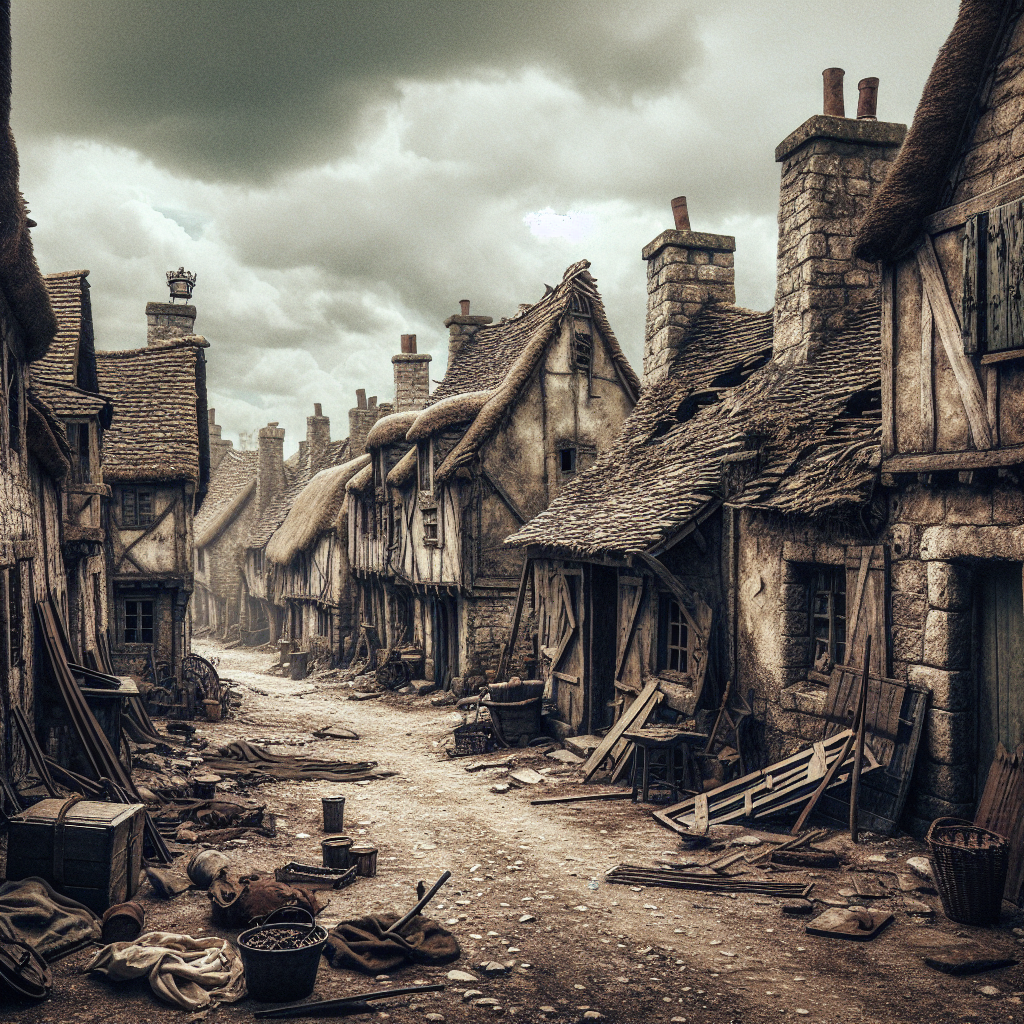The Catastrophic Impact of the Black Death: A Historical Perspective
The Black Death, a historical nightmare that befell Europe in the 14th century, remains one of the most harrowing chapters in human history. It serves not only as a cautionary tale about the fragility of civilization but also as a lens through which we can examine how societies respond to catastrophic events. While the standard narrative often focuses on the staggering death toll, the social, economic, and psychological ramifications deserve equal scrutiny. Delving into these aspects illuminates the complexity and depth of the impact wrought by this infamous pandemic.
The Scale of Devastation
At the heart of the Black Death’s narrative is its shocking mortality rate. Mainstream historical accounts suggest that the pandemic wiped out between 50% and 60% of Europe’s population, with some regions experiencing even higher death rates. This is not mere conjecture; the figures are stark and reveal a society grappling with unprecedented mortality. In a normal year, approximately 3-4% of the Roman population would perish, so the devastation of the Black Death represents a staggering shift in the demographic landscape.
What’s particularly notable about this event is the emotional response it elicited. The overwhelming reaction of shock among the populace, who were unaccustomed to such loss, underscores the scale of the tragedy. It wasn’t just a momentary spike in death; it was an apocalypse that disrupted the very fabric of daily life. The psychological ramifications of such a cataclysm resonate through history, leaving scars that would take generations to heal.
Societal Collapse and Transformation
The immediate aftermath of the Black Death was a profound societal upheaval. As entire communities were decimated, the traditional social structures began to unravel. Feudalism, a system that had dominated European life for centuries, faced severe strain. With a drastically reduced workforce, labor became a valuable commodity; serfs began to demand better conditions and wages, leading to a gradual erosion of feudal privileges.
This transformation was not merely economic. It catalyzed shifts in societal norms and attitudes toward authority. As the Church, once a pillar of societal stability, struggled to provide answers or comfort in the face of mass death, people began to question the very foundations of their beliefs. The crisis bred an environment ripe for transformation, giving birth to new ideas that would later flourish during the Renaissance.
Psychological Fallout and Cultural Shifts
The psychological scars left by the Black Death are as complex as the societal changes it sparked. The specter of death loomed large over Europe, and the pervasive fear of disease transformed how individuals interacted with one another. Public health measures, often drastic and sometimes draconian, were implemented as communities sought to protect themselves from the invisible enemy.
Art and literature flourished during this bleak period, reflecting the collective psyche's turmoil. Creators began to explore themes of mortality, despair, and the fleeting nature of life. Works from this era, whether through haunting depictions of death or through the lens of human suffering, reveal a society grappling with trauma. Each painting, each poem, carries the weight of lost lives and shattered dreams, serving as a testament to humanity’s resilience even amidst the darkest times.
A Legacy of Public Health Awareness
While the Black Death was a catastrophe, it also instigated advancements in public health that would influence future generations. The tragedy underscored the necessity for improved sanitation and health practices. As people witnessed the rapid spread of disease, health measures became a priority for governments and communities.
The establishment of quarantines, isolation protocols, and public health infrastructure can trace their roots back to this period. These measures would evolve over centuries, influencing how societies respond to epidemics and pandemics, including the ones we face today. The lessons learned—albeit at a staggering cost—have shaped modern public health and our understanding of disease transmission.
Conclusion: Reflecting on History's Lessons
The Black Death, with its mind-blowing statistics and profound societal shifts, remains a pivotal moment in history. As we ponder the implications of such catastrophic events, it becomes clear that understanding the past is crucial in navigating our present and future. The intensity of the pandemic’s effects was far beyond what society had previously encountered, leading to transformations that reverberate through time.
The legacy of the Black Death teaches us about the fragility of human existence and the resilience that often emerges from despair. In our contemporary world, as we grapple with our own health crises and societal challenges, the echoes of the past remind us that we are, in many ways, not so different from those who lived through the horrors of the 14th century. History, while often repeating itself in unexpected ways, offers invaluable lessons on compassion, change, and the enduring human spirit.
For a more in-depth exploration of the Black Death and its historical significance, visit the following sources:
https://www.youtube.com/watch?v=-W2c_ixw3cs
For additional historical context, consider checking out:
Understanding the complexities and nuances of this period allows us to appreciate how far we have come and the resilience that lies at the heart of humanity.
Related News
- The Plague’s Journey: Unraveling the Spread of Disease in 17th Century India
- An In-depth Look at the Devastating Impact of Conflict: Insights from World War II
- The Price of Urbanization: Health Impacts During the Industrial Revolution
- The Consequences of World War I: A Catalyst for Change
- The Health Hazards of Early American Industrialization
